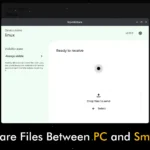The gpasswd command is used to administer “/etc/group” and “/etc/gshadow” file but that does not give you the complete context.
In other words, using the gpasswd command, you can add or remove users from a group, add or remove passwords from a group, promote a user as group admin, and set the list of group members.
On a positive note, remember that setting a password for a group is never a good idea for security reasons because all users are required to know the group password.
Tutorial Details
| Description | Gpasswd |
| Difficulty Level | Low |
| Root or Sudo Privileges | Yes |
| OS Compatibility | Ubuntu, Manjaro, Fedora, etc. |
| Prerequisites | gpasswd |
| Internet Required | No |
Syntax of the Gpasswd Command
The gpasswd command requires two arguments: one is the option, and the other is the group name.
$ gpasswd [OPTION] [GROUP]Demo Group for Gpasswd Practise
To demonstrate the gpasswd command’s practical usage, we will create a temporary group (ex: “demogroup“) using the following command.
$ sudo addgroup demogroupOutput:

Verify the group is created by searching the “demogroup” name on the “/etc/group” file using the grep command.
$ grep demogroup /etc/groupOutput:

Adding a User to a Group
The following command will add the specified user (ex: “linuxtldr“) to the newly created group (ex: “demogroup“).
$ sudo gpasswd -a linuxtldr demogroupOutput:

Use the groups command with the username to verify the user is added to that group.
$ groups linuxtldrOutput:

You can add multiple users to the specified group by using a comma (“,“) as a separator.
Removing the User from the Group
The following command will remove the specified user (ex: “linuxtldr“) from the specified group (ex: “demogroup“).
$ sudo gpasswd -d linuxtldr demogroupOutput:

Verify that the users are removed from the specified group using the following command.
$ groups linuxtldrOutput:

To remove multiple users from the specified group, use a comma (“,“) as a separator.
Setting the Password for the Group
You can set a password for a group name (ex: “demogroup“) with the “gpasswd” command.
$ sudo gpasswd demogroupOutput:

Removing Password from Group
Use the “-r” or “--remove-password” flag to remove the password from the specified group.
$ sudo gpasswd -r demogroupOutput:

Promote the User as Group Adminstrator
The following command will assign the specified user as the group administrator.
$ sudo gpasswd -A linuxtldr demogroupOutput:

To demote the user from the administrator position, use the same command, replacing the old user with the new one.
Setting the List of Group Members
Use the “-M” or “--members” flag to add multiple users to the specified group using the following command.
$ sudo gpasswd -M linuxtldr,jr demogroupOutput:

Removing the Demo Group
After you are done with the practice, you can remove the “demogroup” group we created at the beginning of this article by using the following command.
$ sudo groupdel demogroupOutput:

That was the last example.
I hope you enjoyed the article.
If you have any recommendations, feel free to write them in the comment section.






Join The Conversation
Users are always welcome to leave comments about the articles, whether they are questions, comments, constructive criticism, old information, or notices of typos. Please keep in mind that all comments are moderated according to our comment policy.